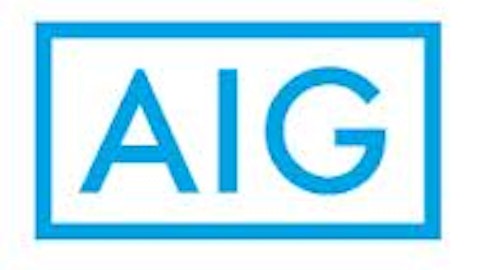Since being spun off from ING Groep N.V., ING U.S. shares have experienced a significant rise, from $19.50 per share to more than $31.20 per share. Investors might be excited to know the fact that ING does not want to divest ING U.S., but it was forced to do so, under the 2008 agreement to receive a capital injection from the Dutch government.
According to the divestment plan, by the end of 2014, ING has to reduce its ownership in ING U.S. to 50%, and it has to complete the divestment by 2016. ING U.S. seems to be quite cheap, trading at only 53% of its reported book value. Should investors buy into ING U.S. after a significant rise after its IPO? Let’s take a look.
Strong balance sheet with ongoing improvement in return
ING U.S. is the retirement, investment and insurance service provider, serving 13 million customers via its 200,000 points of distribution with $481 billion in total asset under management. Most of its adjusted operating earnings, around 65% of the total operating earnings, derived from the Retirement Solutions segment. While Insurance Solutions accounted for 24% of the total profits, Investment Management represented only 11% of the total operating income.
What I like about ING U.S. is its strong balance sheet. As of March, it had nearly $13.4 billion in equity, $6.8 billion in cash and short-term investments and only $3.76 billion in both long and short-term debt. Recently, it also announced to increase its debt level by offering $400 million senior notes, with the coupon of 5.7% due 2043. The fixed maturity securities came in at $73.3 billion.
Investors might find that ING U.S. has been improving its adjusted return on equity. The ongoing business adjusted operating ROE has consistently increased from 7.6% in 2011 to 9.5% in the first quarter. Looking forward, ING U.S. expects to raise its adjusted operating ROE to 12%-13% in the next three years.
The return on capital is estimated to grow from 8% in the first quarter to 10%-11% in 2016. In order to reach 2016 return on capital target, the company will focus on its profitable growth across its business, while simultaneously shifting to less capital intensive, fee-based products. ING U.S. expects that the Retirement and the Annuities business would be the largest contributors.
Cheaper than MetLife and Prudential Financial

Metlife Inc (NYSE:MET) is trading at $48.90 per share, with the total market cap of $53.60 billion. The market values Metlife Inc (NYSE:MET) higher, at 83% of its total book value. MetLife also had quite a strong balance sheet. As of March, it had nearly $65 billion in equity, around $10 billion in cash and only $19 billion in debt.
Metlife Inc (NYSE:MET) has experienced an improvement in its operating results in the first quarter. The net income came in at $956 million, much better than a loss of $174 million in the first quarter last year. The company reported that it would focus on generating free cash flow, which could account for around 35%-45% of the operating earnings in the period of 2014-2016.
Prudential Financial Inc (NYSE:PRU) has the highest valuation among the three. It is trading at $79.20 per share, with the total market cap of more than $36.90 billion. The market values Prudential Financial at 92% of its book value.
Prudential Financial Inc (NYSE:PRU) is one of the largest financial service companies with more than $1 trillion in total asset under management. Prudential Financial would benefit from the good mix of businesses with different income streams.
What I like about Prudential Financial Inc (NYSE:PRU) is its financial strength rating at A+ (Superior) from A.M. Best, especially for the recent successful $3 billion issuance of junior subordinated debt and the recent buyout of the Hartford’s Individual Life Insurance business.
In terms of dividend yield, investors might like Metlife Inc (NYSE:MET) the most with its highest dividend yield at 2.20%. Prudential Financial Inc (NYSE:PRU) ranked second with a 2% dividend yield. ING U.S. also pays shareholders dividends, but with a very small amount of $0.01 per share. Thus, ING U.S. offers shareholders dividend yield at nearly 0.1%.
My Foolish take
Looking forward, ING U.S. could continue to deliver decent returns to its shareholders with its improving operating results including return on equity and return on capital. If ING U.S. could reach its target of 12-13% ROE, ING U.S. could be worth at least its book value at around $59 per share, 88% higher than its current trading price.
Anh HOANG owns shares of ING U.S. The Motley Fool has no position in any of the stocks mentioned.
The article This Retirement and Insurance Business Is Still Cheap originally appeared on Fool.com and is written by Anh HOANG.
Anh is a member of The Motley Fool Blog Network — entries represent the personal opinion of the blogger and are not formally edited.
Copyright © 1995 – 2013 The Motley Fool, LLC. All rights reserved. The Motley Fool has a disclosure policy.


